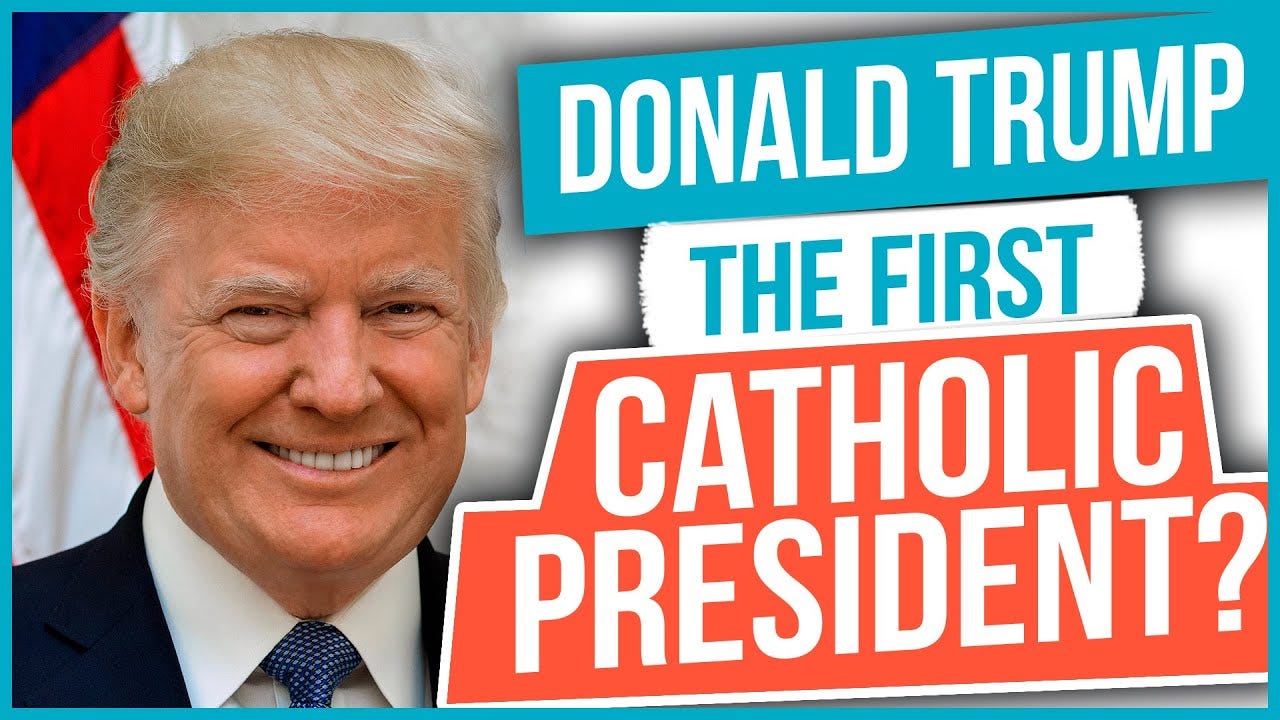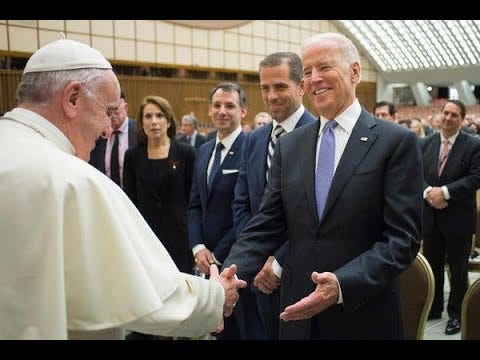“Support of Trump within church has driven some Catholics to the Exit” - Excerpts from NCR Online April 29, 2021
David Campbell, chair of the department of political science at the University of Notre Dame:
"Many Americans — especially young people — see religion as bound up with political conservatism, and the Republican party specifically," Campbell said.
"Since that is not their party, or their politics, they do not want to identify as being religious. Young people are especially allergic to the perception that many — but by no means all — American religions are hostile to LGBTQ rights."
A convert who wished to remain anonymous but is still a practicing Catholic said:
"I want a church that stands for justice. I did not sign up to join a GOP SuperPAC."
Kaya Oakes, essayist and speaker is the author of The Nones Are Alright: A New Generation of Believers, Seekers, and Those in Between (Orbis Books, 2015).
Where are they going, these tired and angry Catholics who are leaving? Are they giving up on religion itself? Not necessarily. According to Oakes, many of these people are "creating a more DIY, mix-and-match kind of faith practice."
The Catholic Church is liberal on social justice issues and conservative on sexual morality. The culture wars cut across these positions. While espousing traditional positions on sexual relations and reproduction, the church uses inductive reasoning from traditional tenets and taboos regarding marriage, reproduction, and gender ideology. Conservatives focus on these issues.
For over 50 years the Catholic Church has focused its efforts on overturning Roe v. Wade. Its consistent “seamless garment” position on protecting life from conception to “natural” death covers not only abortion but outlaws capital punishment and euthanasia or assisted death. Respect for life and human dignity also has social repercussions. Prolife is not pro-birth and implies that the state and society more broadly should offer cradle to grave social welfare programs, which conservatives refer to as the “nanny state”.
This “seamless garment” policy has led the church to take progressive positions on other culture war issues such as racism, protection of the environment, and immigration. These positions come from a more deductive approach to moral reasoning. One looks at the situation, the science, and the people from the focus of human rights.
All of this has led Catholics on the right and the left to do what the Roman soldiers at the crucifixion would not do. They have torn the seamless garment. The Catholic right, including prominent bishops, has taken on the policies of the Republican party. Those on the left focus on Pope Francis’ statements that deemphasize sexual issues while focusing on the environment, migration, and poverty. The Pope wants the church to be a field hospital for the marginalized. The Catholic right refers to the Left as Cafeteria Catholics and to themselves as Faithful Catholics. For the 35 years from Reagan to Obama, Popes John Paul II (now a saint) and Benedict XVI favored the right with their opposition to Liberation Theology, abortion exceptions, and LGBTQ rights.
Unfortunately, much of Papal teaching and church teaching in general carries less weight today due to the church’s inaction and mishandling of the clergy sexual abuse crisis. Consequently, Catholics across the spectrum are more likely to look at church teaching and leadership with skepticism. The exclusion of women from ordination has left many on the left disaffected, since they consider it to be morally compromised.
Conservative Catholics now oppose President Biden and the former Speaker of the House, Nancy Pelosi, who are practicing Catholics, and endorse an ex-president whose only faith is expediency. According to Gallup, 45% of Catholics voted for Trump and 51% voted for Clinton in 2016. In 2020, 49% of Catholics voted for Biden while 50% voted for Trump.
From my training and experience as a Catholic deacon, homilies and sermons can divide or unite a parish. The challenge is to hold a space in which parishioners across the political spectrum can worship and - at least - share coffee and donuts. Generally, Saturday evening and early Sunday morning Masses are popular with the Trumpists while the mid-morning, noon, and evening Masses are a more liberal crowd. Spanish language Masses are more in keeping with the seamless garment - conservative on sexual morality and liberal on social issues, but there is significant opposition to immigration.
At stake is not so much the balance of an election of tremendous import but the legitimacy of religion as a right way of living that transcends politics, policy, and party. Conservative Catholics who focus on traditional teaching and styles of worship and prayer, now find themselves opposing Pope Francis. Several bishops and even Vatican officials have not been shy about their criticisms. Traditionalists have been strong supporters of the papacy but are now looking more to the catechism of Fox News. Progressives who are enjoying the change from the previous conservative popes are still at odds with the pope over the status of women and LGBTQ rights. The focus on the marginalized and the disenfranchised and the rehabilitation of liberation theology has been gratifying, but Francis will only go so far. Those raised in progressive parishes and families and who were active in worship and social justice are leaving.
The Catholic cafeteria is frequented by conservatives and progressives. Despite the church’s positions on birth control, abortion, divorce, and LGBTQ issues, birth control has become the norm on both the right and the left. In 2020, The Pew Research Center issued a report on Catholics and abortion. It found that 56% of Catholics felt that abortion should be legal in all or most cases while 46% held that abortion should be illegal in all or most cases. Of those who attend Mass regularly, two thirds were opposed to abortion. However, two thirds of those who attended Mass less frequently were more open to abortion. Catholic views on abortion followed their political party affiliation.
The notion of religion as aligned with conservative political positions is true to an extent. However, one can also argue that religious teaching supports conservative politics. It isn’t so much that politics is defining religious teaching but that religious teaching is defining politics. The broader paradox is that Catholic teaching is informing both conservative politics and progressive politics to a lesser extent. By definition, progressives have a more flexible notion of boundaries and the meeting of the religious and the secular. A more open world view can focus on the contradictions and scandal of religious institutions while a more closed view with clear boundaries embodies a religious lifestyle that opposes secular trends and validates the notion that religion is not a completely human undertaking. Of course “faithful Catholics” focus on the fact that a religious lifestyle is a divine and transcendent undertaking. According to the Second Vatican Council, both views are correct and complementary.
Nevertheless, ambiguity and nuance are not congenial with most people. In today’s identity politics, to be Catholic is to be more conservative than progressive, which creates a widespread disaffection for those who want to see change and view the Catholic Church and religion more broadly as morally compromised. Although we might like to think that the coming election is about the politics of the world, it is more about the politics of the soul.







Hi Dad,
In regard to tolerance for abortion and birth control being legal, I would think the Vatican II document "Nostra Aetatae" (sic) would imply that kind of tolerance, as it requires Catholics to tolerate others and their ways where they differ. Civic government in its highest form should provide a framework for those with different values to coexist by legislating and ruling what the general consensus is.
Sadly, the human habit that pre-exists 5000 years of recorded history of being all up in each other's business to ensure the crops flourish, we succeed in war, etc. is alive and well in catholicism these days. Why I identify as a neo pagan now.
Randy... Outstanding piece of writing and thinking about the "seamless garment". That analogy is very powerful for honesty. Your honesty about the church and its position on issues is refreshing. I read this piece before I left for Minnesota and have thought about it since reading it another couple of times. The question is why certain people think one way e.g. conservative vs another liberal. Is it their background, their genetic inheritance, and their environment? What happens now to the new generations that do not believe in organized religion? We have torn the seamless garment and thrown away the pieces?